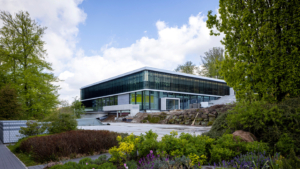
Supporting Trends in Life Sciences with Simpler Laser Products
"It's obvious that the overall healthcare market will continue to grow. And photonics technology - which delivers a number of unique capabilities, like non-invasive or non-contact probing at high spatial resolution - is poised to play an ever-increasing role in this field."
Why is the importance of laser-based systems in biotechnology research currently increasing and what trends is Coherent currently observing?
Chris Dorman. For quite a few years now, the most important trends in biotechnology have been developments that are focused on improving healthcare. Specifically, this means improved diagnoses and preventative care, improved treatments, lower costs, and most importantly of all, improved outcomes. So that’s the overarching backdrop. But let’s zero in on two key areas: the move towards personalized medicine for disease care, and advances in neuroscience targeting neurodegenerative ailments.
Personalized medicine refers to the use of detailed diagnostics to understand a specific patient’s disease at the cellular and even molecular level. That might involve determining what specific virus variant they are infected with, or what gene mutation is causing their cancer. This allows treatment to be precisely tailored to the individual. And this improves the chances of a good outcome and often reduces unwanted side-effects. It goes without saying that the Covid-19 pandemic has further accelerated this trend.
With neurodegenerative diseases, the science is at an earlier more transitional stage. Scientists are still figuring out how the brain stores information, how it makes decisions, and how conditions like Alzheimer’s or ALS (MND) arise. But progress here is faster than ever and is already bearing the first fruits – witness the recent announcements of two potential drugs that would be the first to ever positively impact the progression of Alzheimer’s.
So, it’s definitely a dynamic and exciting time across life sciences – from research through to the doctor’s office.
In which application field – microscopy, spectroscopy, flow cytometry or DNA sequencing – do you currently see the greatest dynamics, in which the greatest market potential, and why?
Chris Dorman. The simple answer is all of the above, and often in combination! The main drivers are those I’ve just outlined. Personalized medicine requires increased use of flow cytometry and genetic sequencing of both the patient and the disease agent (bacteria or virus). The fight against the Covid-19 virus has made massive use of both flow cytometry and genetic sequencing, Both these modalities rely on photonic technology, primarily in the form of laser excited fluorescence.
Microscopy is always a front-line tool in treating diseases, particularly new diseases, since it allows scientists and pathologists to see what is happening at the cellular level. Here there is increasing use of laser excited fluorescence to provide more information-rich images. Advances in the technology are moving us ever closer to the widespread use of in situ biopsies in real time, rather than tissue sampling, sectioning, and lab analysis. And since some type of spectral signature is used to identify cellular materials, you can even argue that spectroscopy is essentially playing a role, too.
In neurodegenerative diseases, a key tool is the multiphoton microscope. This technology has advanced to the level that allows live brain tissue to be studied in three-dimensions at single neuron spatial resolution. These studies typically correlate anatomical and functional details and often involve optogenetic stimulation with lasers, both CW and ultrafast.
What is Coherent’s current development priority, market promise and what milestones do you want to achieve in the near future?
Chris Dorman. Lasers make all these techniques possible. Our developments are targeted at making these more possible. By that, I mean easier to implement, easier to combine with other techniques, and easier and faster to get more information from.
Take flow cytometry as an example. A key term here is multi-parameter cytometry. Here, multiple laser wavelengths are used in the same instrument to allow the data to be analyzed for as many as 30 different parameters. For an instrument designer whose expertise is primarily in flow dynamics and fluorophore chemistry, developing systems of this complexity can represent a major challenge.
Coherent supports these designers with light engines. These are modules which integrate multiple lasers and their focusing optics. This allows the instrument builder to incorporate multiple lasers into their design in a plug-and-play manner.
And in ultrafast lasers for multiphoton microscopy, we continue to expand our family of single-wavelength lasers. These are robust, economical, and compact light sources that still offer state-of-the-art performance. So, increased ease-of-use without sacrificing performance.
It’s obvious that the overall healthcare market will continue to grow. And photonics technology – which delivers a number of unique capabilities, like non-invasive or non-contact probing at high spatial resolution – is poised to play an ever-increasing role in this field. But, in the past, it has often required specialized expertise to effectively utilize photonics. Our goal at Coherent is to remove these barriers and enable the healthcare field to fully enjoy the benefits of photonics.


 Asebio - Miguel Méndez
Asebio - Miguel Méndez Kinga Lubowiecka/ EMBL
Kinga Lubowiecka/ EMBL Adobe Stock - TechArtTrends
Adobe Stock - TechArtTrends